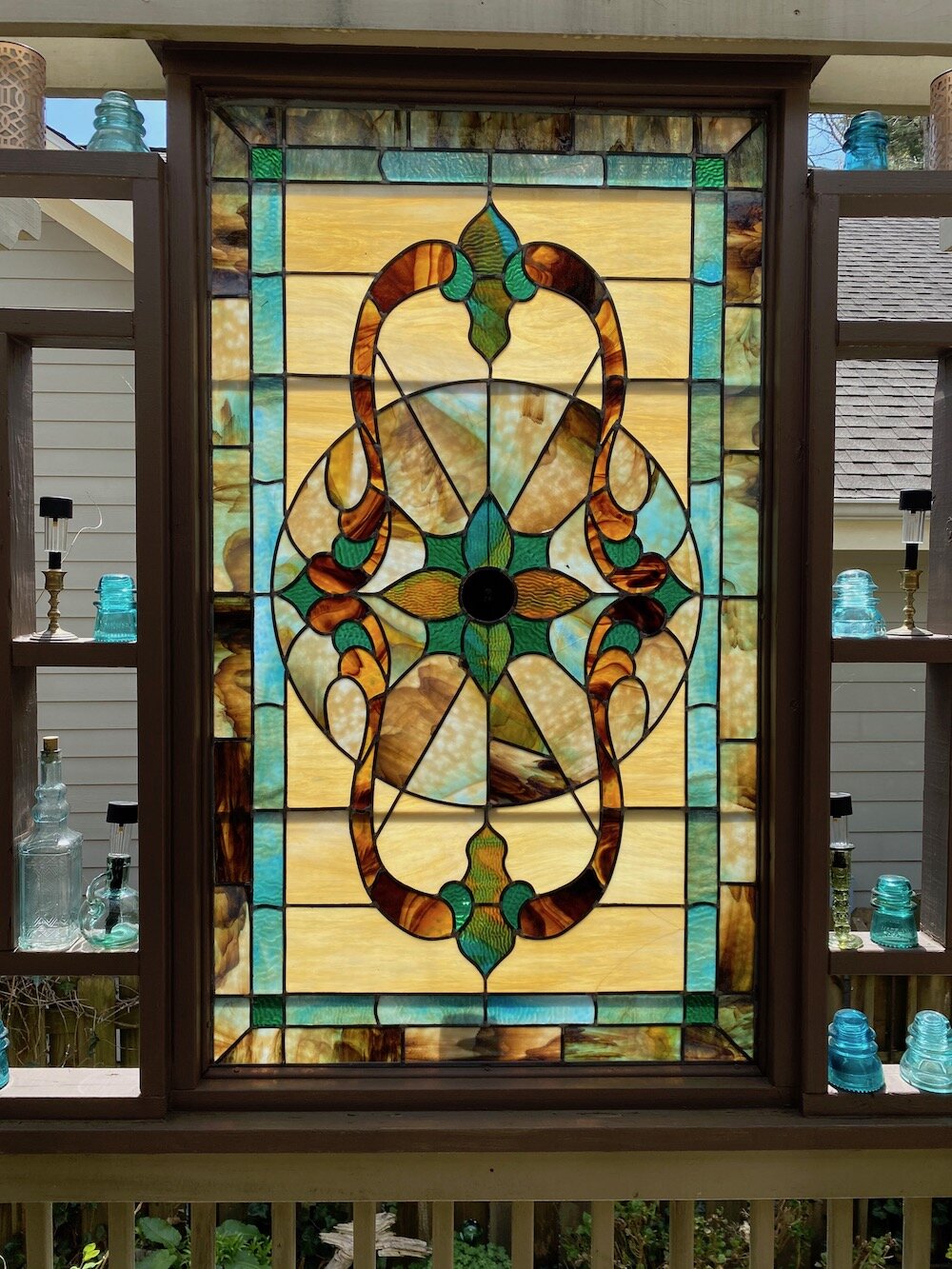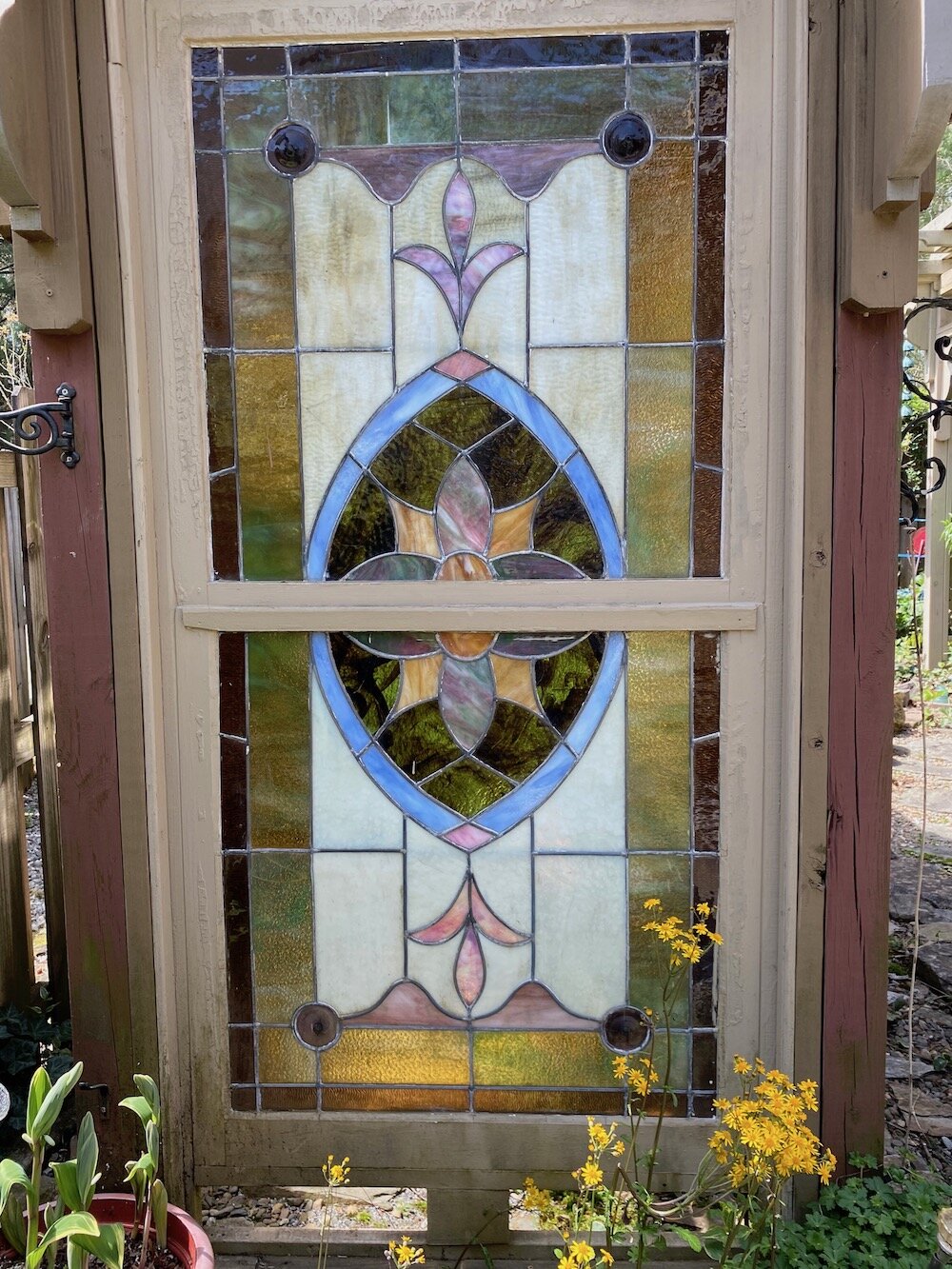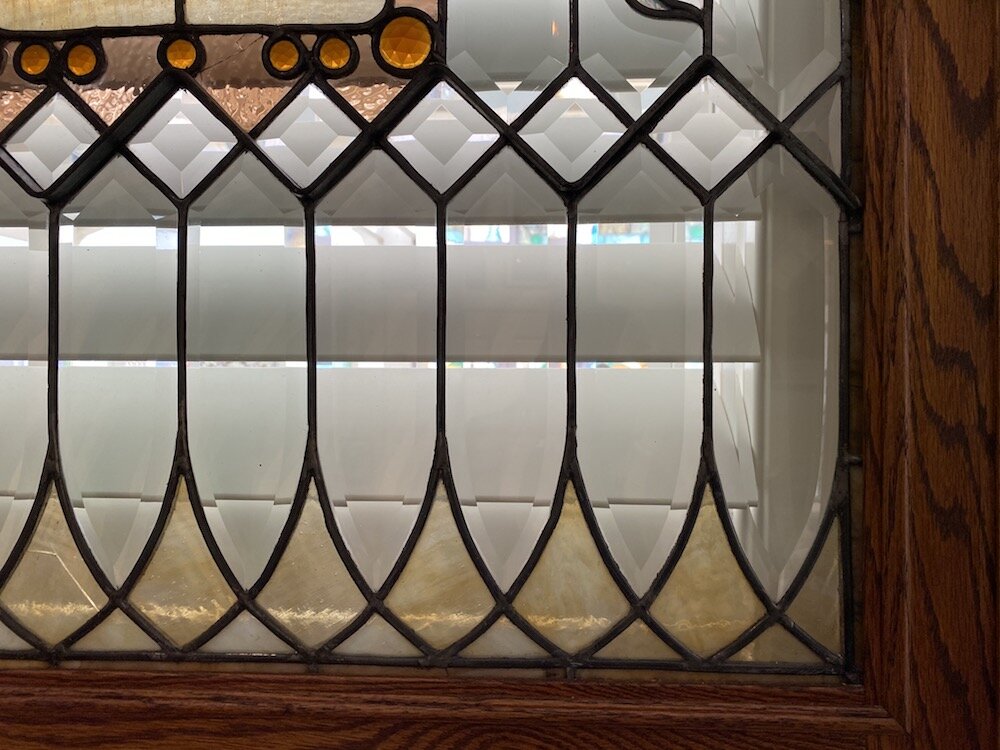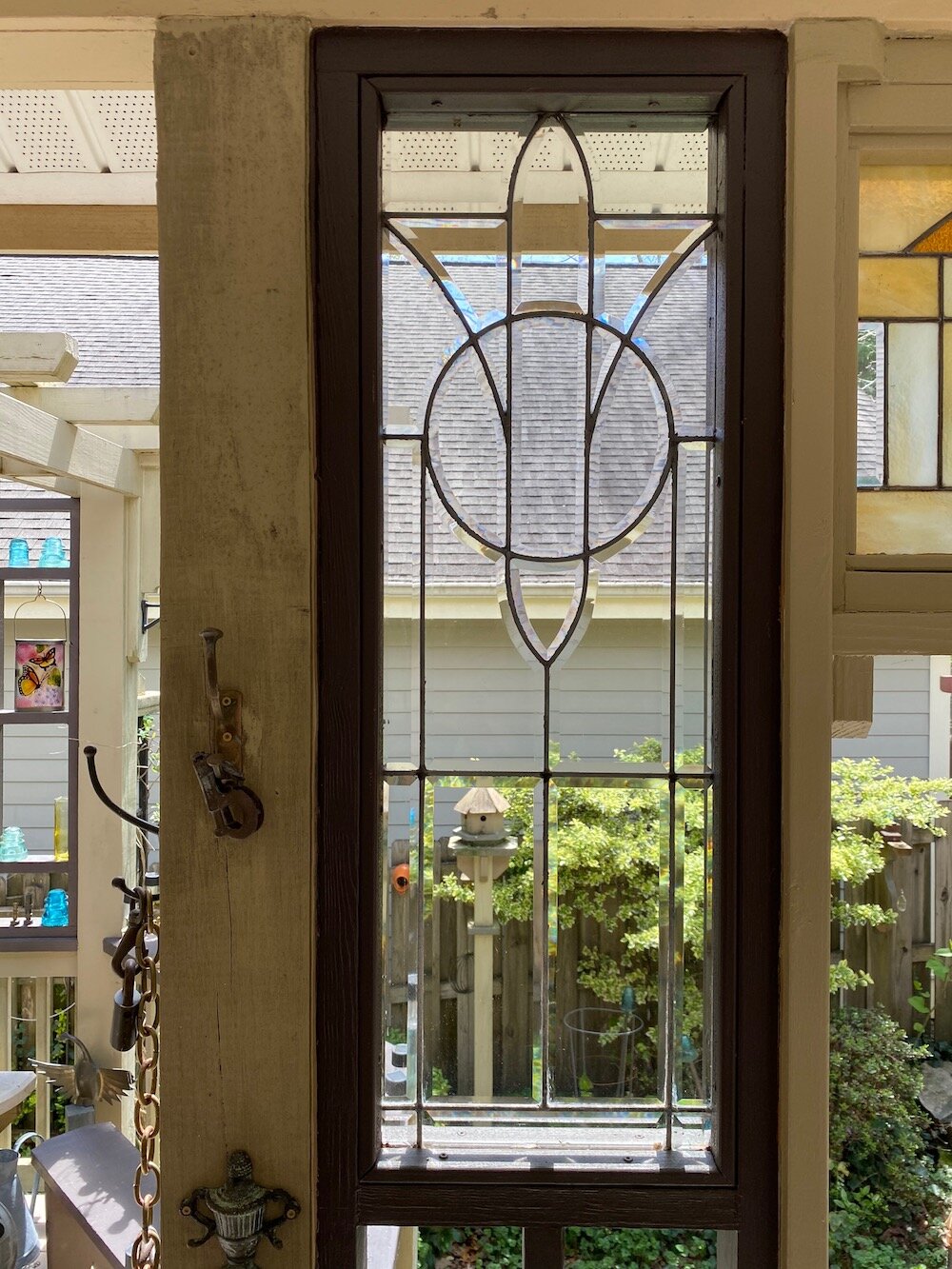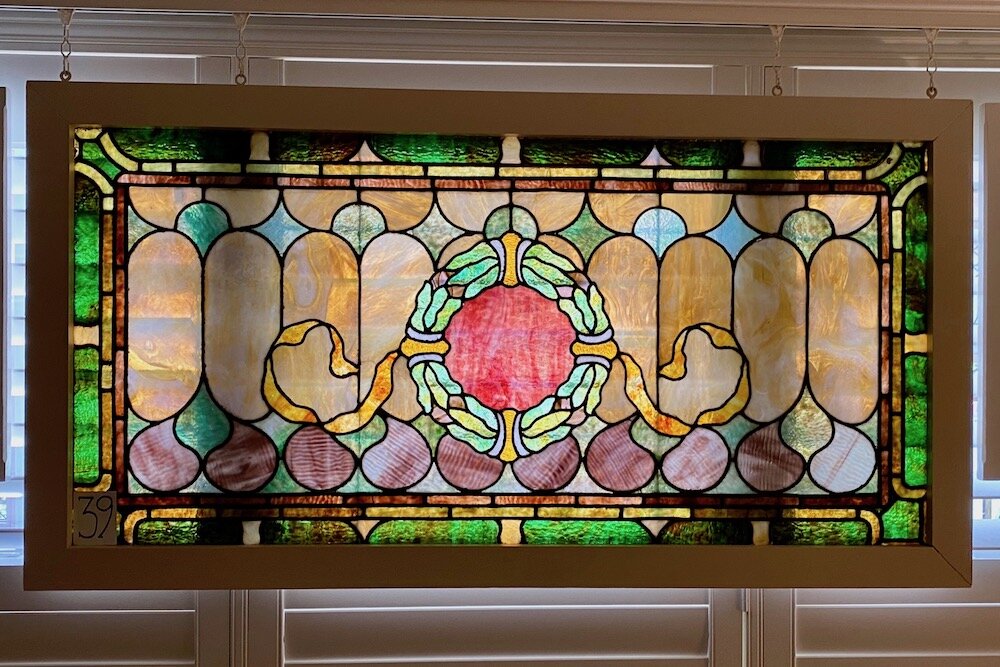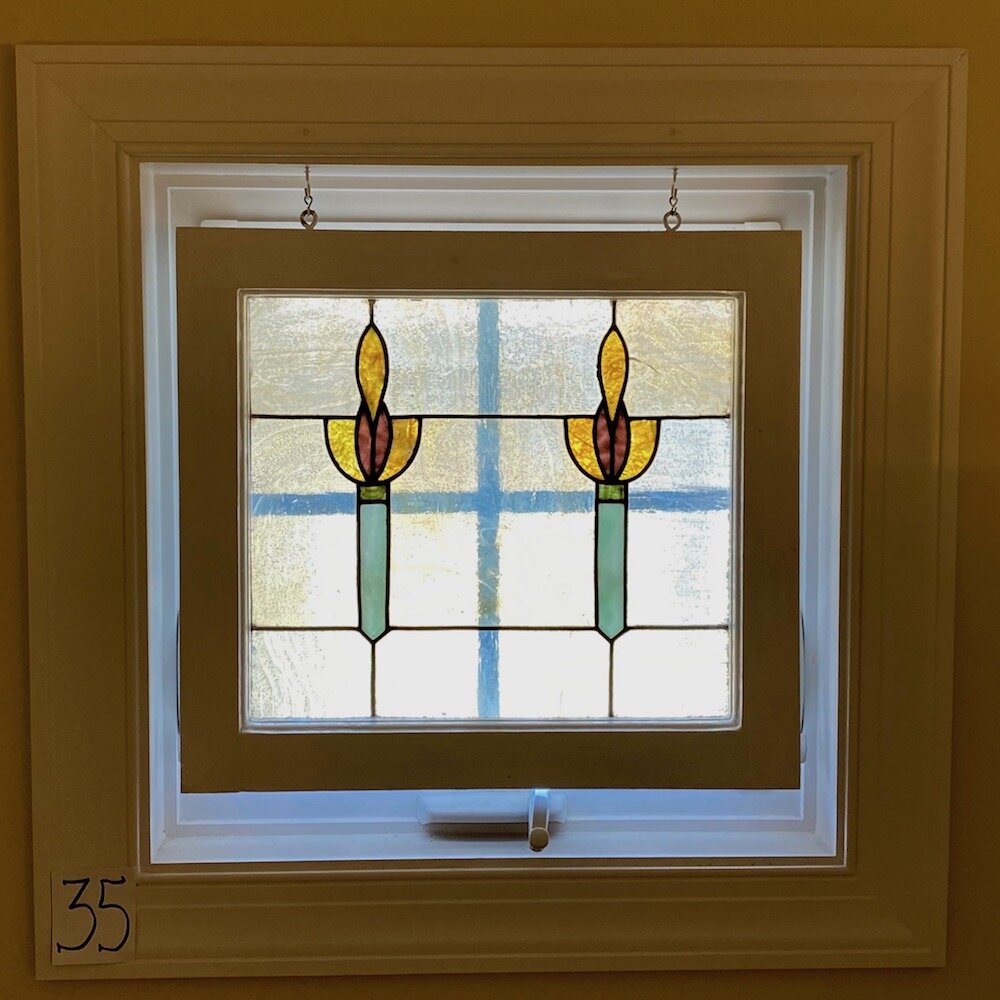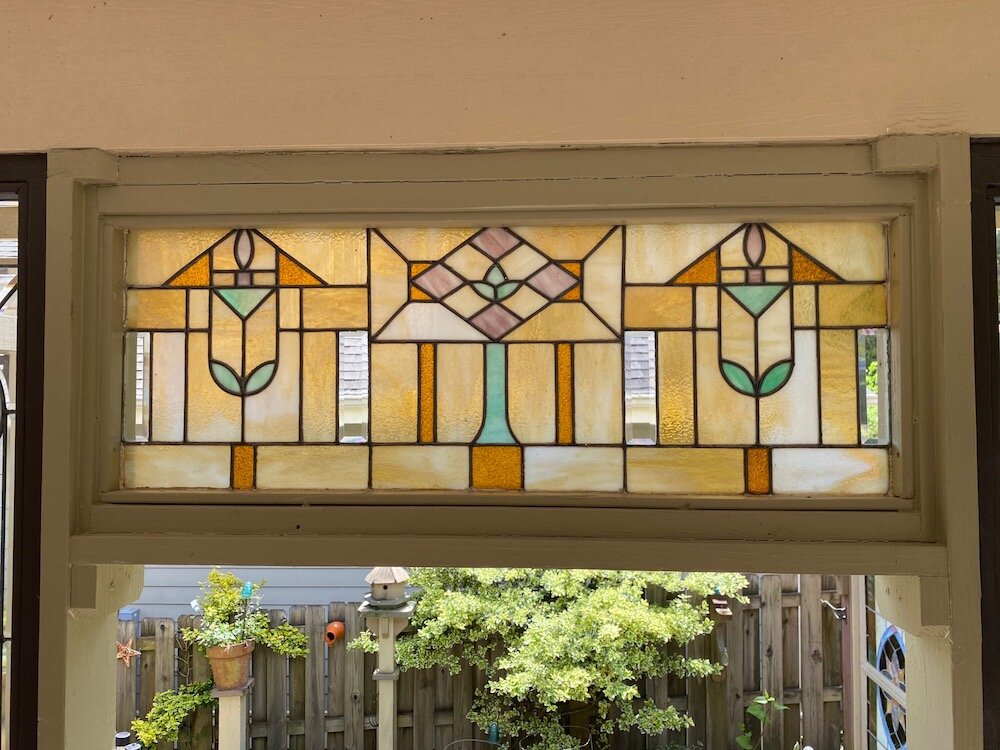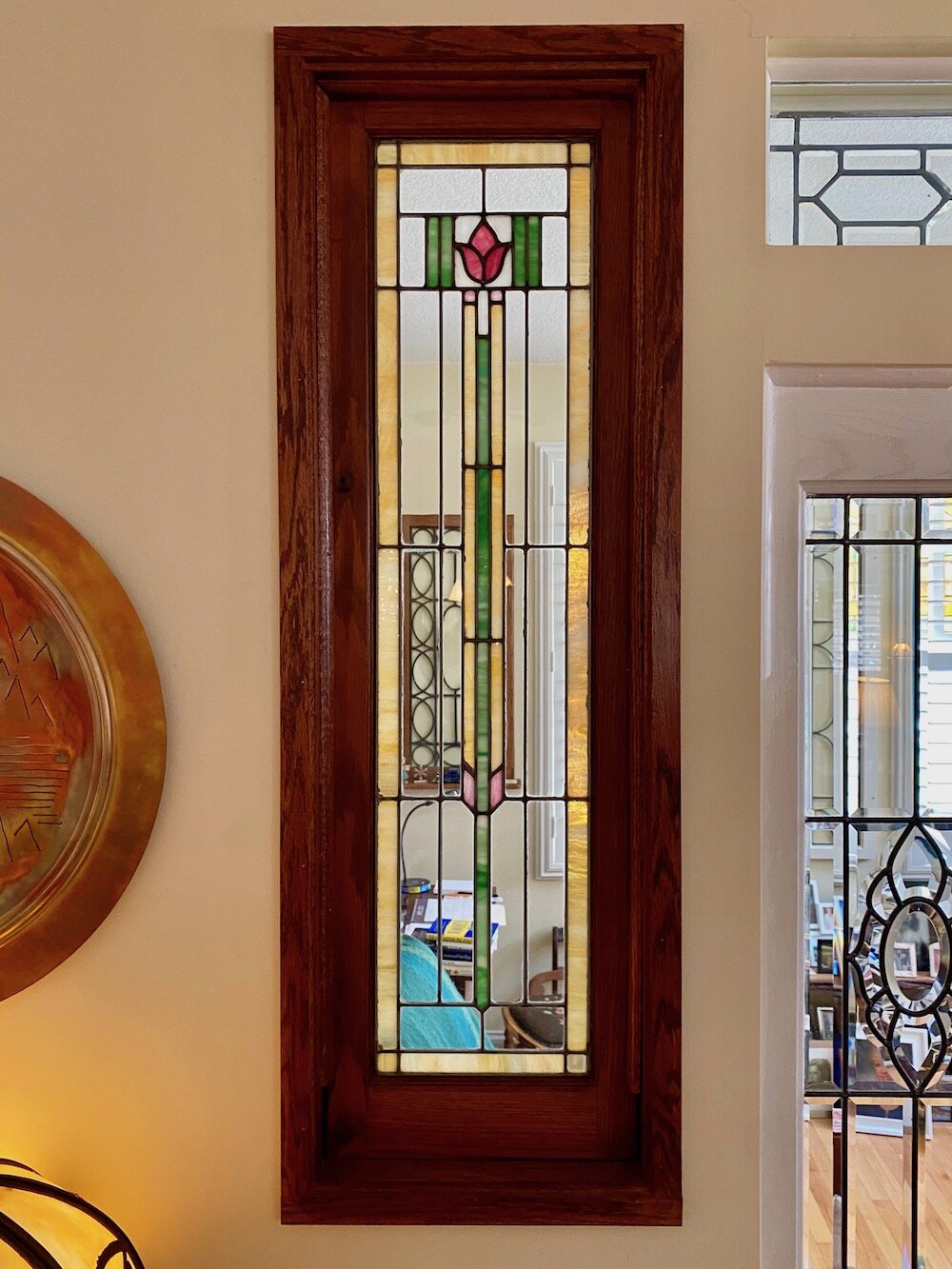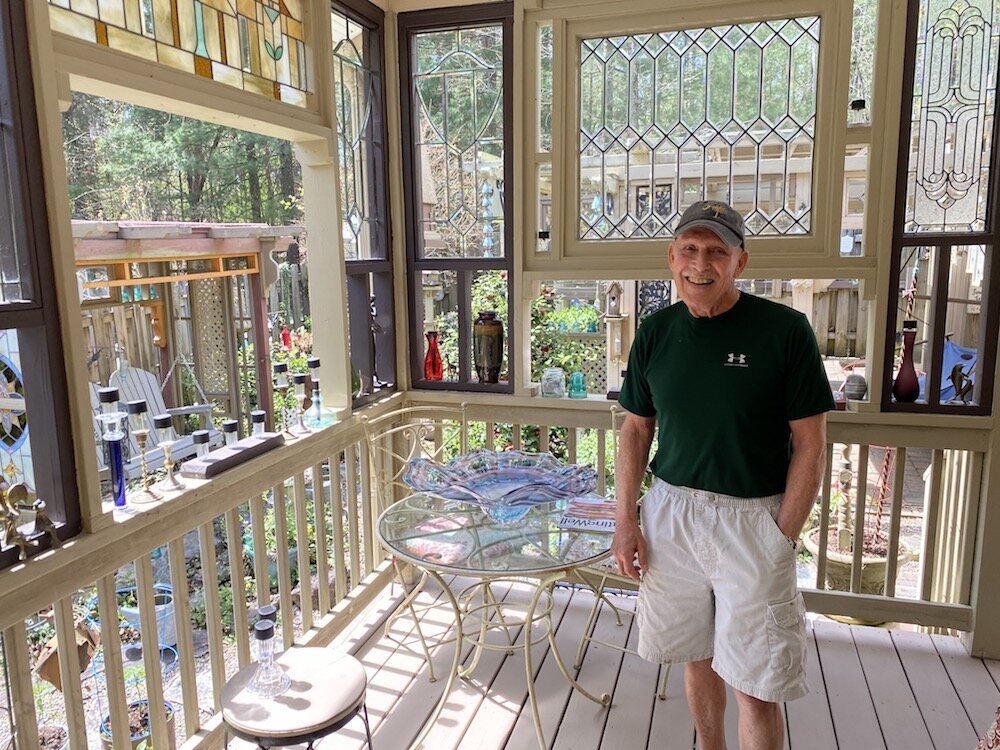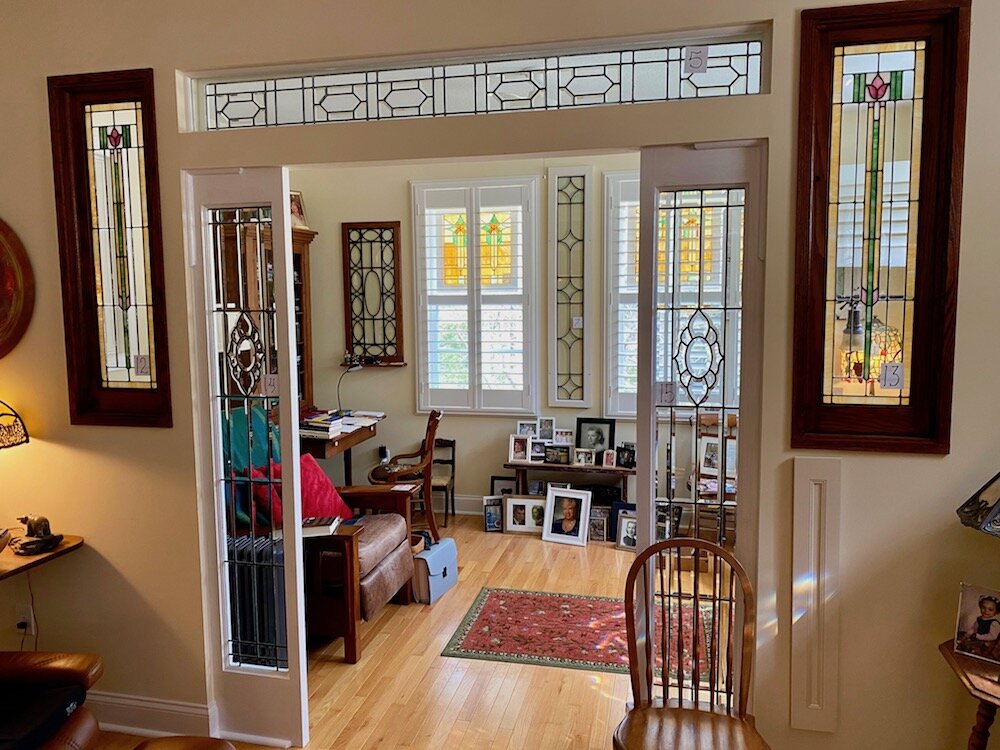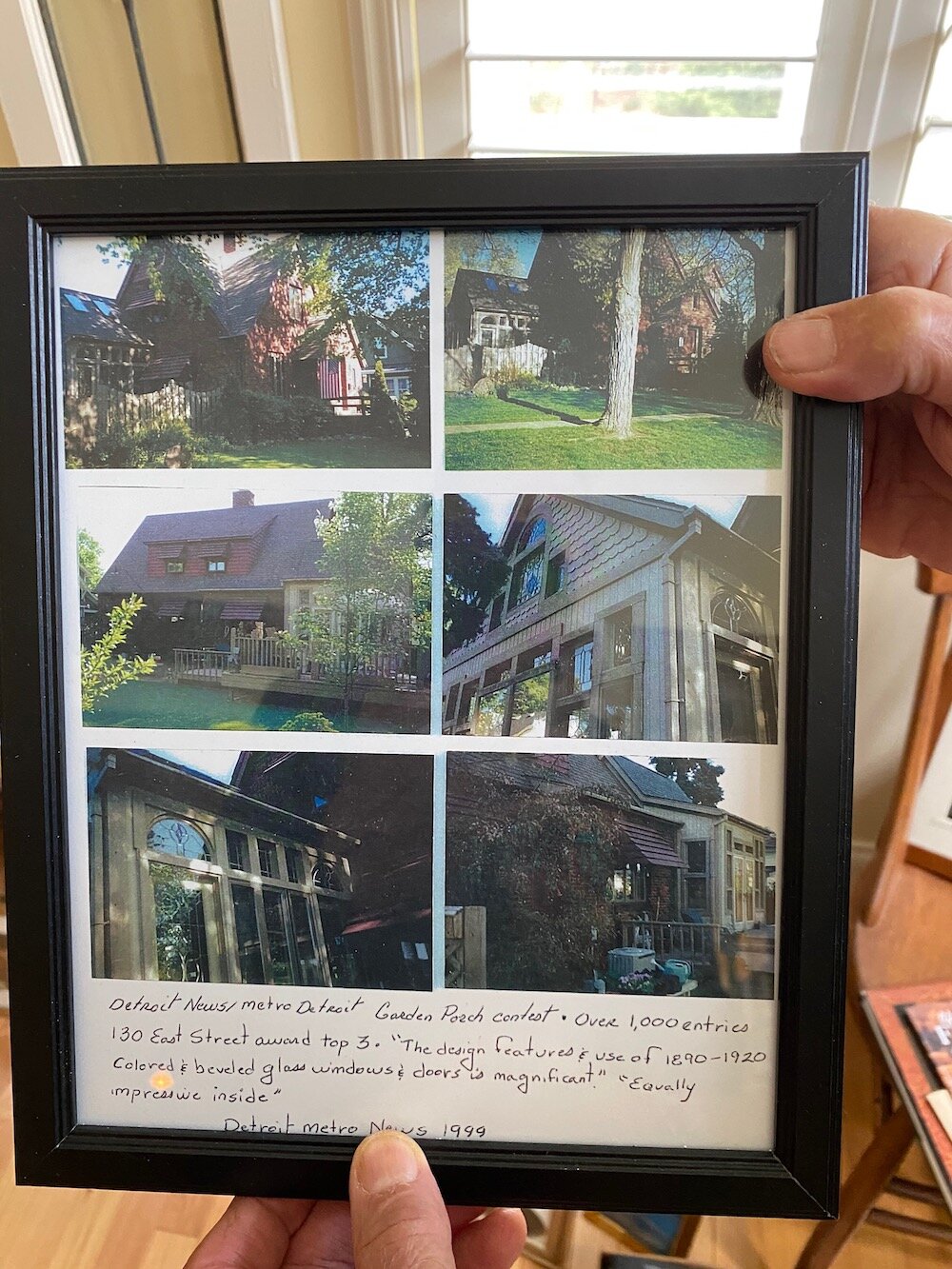Memories Etched in Glass
/John Fundukian on his back porch.
One would never expect to find an extensive collection of stained glass from early 20th century Detroit, Michigan in Flat Rock, NC. Until, that is, you meet the very unconventional John Fundukian and experience his passion and enthusiasm for his amazing collection. Then it all makes perfect sense.
John grew up in Highland Park, Michigan, a small midwestern town that suddenly found itself at the center of America’s industrial revolution when Henry Ford decided to locate his Highland Park automobile plant there in 1909. The town’s population swelled - as did it’s wealth - and soon Ford auto executives were building many grand homes in and around Highland Park. A prominent feature of many of the homes were beautiful windows, doors, cabinets, transoms and other architectural elements that featured stained glass inserts of incredible and intricate designs.
John was born in 1941 into a family of Armenian immigrants and, although his family could not afford stained glass in their own home, everywhere he went he could see examples of the centuries-old practice of using colored glass to form decorative or pictorial designs set in a lead framework like a mosaic. Young John would pass by or occasionally visit the stately homes and see what he now refers to as “the conspicuous consumption” of owners that celebrated their wealth and social status with the very expensive stained glass designs.
One of John’s favorite pieces saved from the front door of Detroit home that was torn down,
As John walked, ran and pedaled past those grand homes, neither he nor the occupants could have surmised that someday that small boy would be instrumental in saving many of those beautiful and delicate pieces of art.
Fast forward to the 1970s and early 1980s, and John and his beautiful bride, Jean, were still living in metro Detroit. John and Jean were both educators and successfully raising a family of three children. Detroit, however, was not sharing in their happiness nor in their success. The domestic auto industry was in decline and many once-prosperous families found themselves the victims of a slump in demand for domestic automobiles. At the same time, there was significant “white flight” out of the city to the surrounding cities. In short, the city of Detroit was experiencing a catastrophic economic decline.
Among the victims of that decline were many of the stately homes that John lived near during his boyhood. Homes were abandoned and fell into irreparable decay. Many were slated for demolition. Lost in the deconstruction were many beautiful pieces of stained glass art.
At one point there were 40,000 vacant homes in Detroit and those homes yielded significant collections of stained glass. There were also a number of churches with beautiful stained glass windows that shuttered their doors as their membership fled the city and the churches became unsustainable.
From a church in Detroit. The top half was destroyed and John had it reconstructed to match the original design. ““I get great joy out of saving things that otherwise might not be saved.”
John remembered the sparkling jewels he saw as a boy and determined to do something to save at least some of the relics of his boyhood memories. Beginning over 40 years ago and working with a series of dealers, John began purchasing stained glass salvaged from the abandoned Detroit homes. The dealers would obtain permission to enter homes slated for teardowns and save what pieces they could - from door panels, windows, cabinet doors - anywhere that the original owner had commissioned the work to be installed. John was on a mission. “My motivation,” he explains “is the joy I feel when I can save a remnant piece of stained glass. Something that was broken or being discarded, but could still be salvaged.” John Fundukian’s passion was to save both the artwork and the memories of his youth.
Some of his earliest acquisitions ultimately ended up in his garden porch that featured 36 stained glass windows and six french doors. The design was so impressive that the Detroit News selected the Fundukian’s porch as one of the three best designs among a 1000 entries. By then John was well on his way to a lifetime of collecting stained glass.
With time, John and Jean discovered Lake Lure and built a log cabin there. Lake Lure then lured them to Hendersonville which ultimately led them to their home in the Highland Lake Village community of Flat Rock - a place John dearly loves. “I love the neighborhood because it reminds me of growing up with alleys and houses in close proximity and good neighbors.”
The Fundukian home has now become a de facto stained glass museum. Fifty of his favorite pieces are scattered throughout his home and back patio and labeled with numbers. John invites neighbors to tour his home and read about each piece with printed descriptions matched to the numbers.
The experience of being in John’s home has a magical quality about it with virtually every window, door, and opening shimmering with light and color refracted through antique, beveled, and tinted glass. Each piece changes throughout the day with the varying light and the show continues into the evening when 70 solar-powered lights on the back patio provide another enchanting experience of shimmering stained-glass illuminated at night.
An interesting piece that originally served as a skylight for a business.
John especially enjoys the luminous quality of his salvaged stained glass. “I love the translucence of it. If you have a painting, light reflects off it. But light goes through stained glass and it adds a value and a beauty that is unbelievable. And timeless. That's why it's been here since the time of the Romans.” When asked what makes a good piece of stained glass, John points to the design, the quality of the glass used, and most importantly, if the viewer likes what he sees.
There is also a mystical quality to John’s relationship with the pieces he’s saved from ending up as shattered relics in a Michigan landfill. “I look at a piece and then I dream and an idea comes to me in either Armenian or English. If it's Armenian, it’s frustrating because I've not retained my fluency. If it's in English, it gives me clues and guides me to how I might display the piece. And then I wake up and write it down.”
Today, John has approximately 90 pieces of stained glass. Most of the pieces date from 1915 to 1930 although some pieces are older. And his impressive collection continues to grow. “I have a “go-gene,” he says with a mischievous grin. “But I don’t have a “stop-gene.”
John Fundukian’s missing “stop-gene” has indeed been a good thing for the stained glass of Detroit and, by fortunate happenstance, for his many friends and neighbors who are lucky enough to spend time with a very unconventional man and his inspiring collection of stained glass. “I like sharing my acquisitions because it generates a love for the creation and appreciation for art,” he explains.
And indeed, a few minutes spent in John’s amazing home certainly has the intended effect. It is impossible not to be impressed with the art - and the man who’s made it his mission to save that art.






